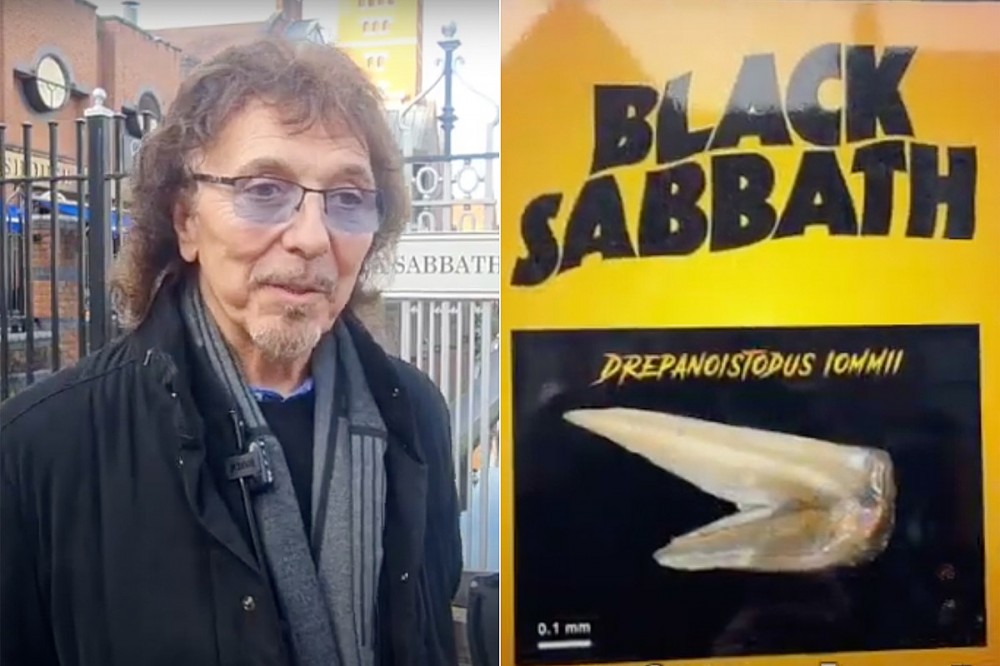
Tony Iommi Is Introduced to 469-Million-Year-Old Fossil Bearing His Name
In October, it was revealed that a newly discovered fossil had been named after Black Sabbath's legendary guitarist Tony Iommi. Now the musician has had a chance to see the fossil up close and he even filmed a video along with it from the Black Sabbath bench on Black Sabbath bridge located in Birmingham, England.
The Drepanoistodus Iommii was discovered by a group that included metal loving paleontologist Mats Eriksson, who had previously named fossils after Motorhead leader Lemmy Kilmister, Cannibal Corpse bassist Alex Webster and iconic falsetto singer King Diamond. The team of Danish and Swedish paleontologists retrieved the fossil "from a succession of limestone in western Russia" which, during the Ordovician Period (a 45-million year period dating 488.3 million years back), formed sea floor sediments.
In the special ceremony taking place in Birmingham, Iommi joked, "It was a real shock to learn that a real fossil has been named after me. Of course you can imagine my friends now, and all the abuse I've got." He later added, "This has to be the most weirdest thing that's ever been named after me."
He was then introduced to Eriksson speaking via video chat on a phone. "What an absolute honor it is to meet you. The only reason why we do this is to sort of have fun and for me it's a way of combining my love affairs with nature and music. That's played such an important role in all my life," said the paleontologist, with Iommi responding, "It's really great, I'm really proud of it. Thank you very much."
Back in October, Eriksson stated, "Tony Iommi has been high on my list of people I wanted to honor this way. To my great pleasure, both my fellow co-authors loved the suggestion. So, now Tony Iommi is also immortalized in the scientific literature with the gorgeous species Drepanoistodus Iommii."
Jan Audun Rasmussen, who specializes in conodonts, enthused, "Drepanoistodus Iommii is indeed excellently preserved, belongs to a complex group of conodonts, and has great potential as a time marker (so-called biostratigraphy)."
Watch the introduction in full below.